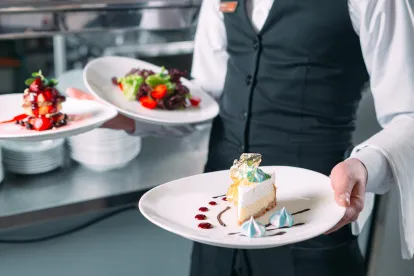On November 24, 2020, a class action price gouging claim was filed against a California based operator of casual fine dining restaurants. The class action lawsuit against Hillstone Restaurant Group alleges price gouging in violation of California Penal Code §396. According to the lawsuit, “Hillstone engaged in unfair and unlawful business practices by increasing its price on food items and also unjustifiably charging a 10% or 15% so-called ‘service or packaging fee’ for takeout orders.” The lawsuit further states that “despite increasing the cost of its food items and adding this Fee, there has been no change in the quality or quantity of the food sold or the packaging being offered for pickup by consumers as compared to Hillstone’s pre-pandemic offerings.” Plaintiffs seek restitution, injunctive relief, attorneys’ fees, and punitive damages. The complaint is striking not only because it shows the extent to which plaintiffs will bring claims at the margins of price gouging restrictions, but also for the glimpse it gives into what may be the coming wave of price gouging claims in 2021.
When California’s price gouging law was activated on March 4, 2020, observers expected the focus of price gouging enforcement and litigation would be on goods and services most readily associated with the pandemic: necessary food products, medical supplies such as facemasks or hand sanitizer, and other goods required in emergencies. In a move, however, that is being seen with increasing frequency, plaintiffs are finding broad application of the pricing restrictions, and a swath of potential claims. In the Hillstone case, a restaurant group was sued for, among other allegations, adding a $13.50 service charge to a $90 dollar order of sushi and barbecue ribs. While Hillstone started charging a “service and packaging fee,” the complaint alleges that it is “unclear what precisely the Fee is being charged for” given that plaintiffs allege that paper receipts referred to either a “service fee” or a “packaging fee.” Nationwide, prospective plaintiffs are scrutinizing all aspects of pricing decisions.
At least two key takeaways come immediately to mind: (1) plaintiffs will continue to not only target businesses operating well above relevant state price gouging baselines, but also those who operate right at the margin set by state law; and (2) any company whose product is covered by a state price gouging law must maintain strict compliance measures to guard against potential claims. While many price gouging lawsuits in the early days of the pandemic targeted companies for increasing prices on emergency supplies by two or three times what they were charging before the pandemic, the fact that plaintiffs in this case are targeting a 10-15% service packaging fee in a state that caps price increases at 10% serves as reminder that compliance with all applicable pricing restrictions will be critical for the foreseeable future – we are in unusual times.
The Hillstone matter also provides a case study for all businesses dealing with price gouging restrictions during the COVID-19 pandemic. While some restaurants like Hillstonehave found themselves on the punitive side of California’s attempt to protect consumers, elsewhere California restaurants have benefited from local ordinances that cap fees for app-based delivery companies like Uber and Doordash at 15%. These measures, currently gaining steam in Santa Clara County and already in effect in San Mateo County and elsewhere, are meant to protect restaurants as their revenue streams shift increasingly towards delivery and takeout food, and away from in restaurant meals. Restaurants find themselves as both the target, and the intended beneficiary, of price gouging laws in California.
This post was written by Dina Noureldin.




 />i
/>i
